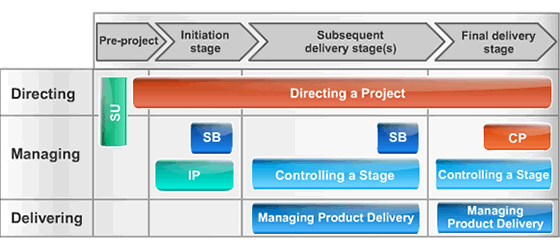The development of procurement strategy follows the stages in the life of a project. Initially, a preliminary strategy is determined. It is based on a broad definition of objectives and is an essential step in establishing the way forward for the project. It encourages the client to consider strategy early. The preliminary procurement strategy is usually developed with help from the client’s adviser and possibly other consultants. Procurement strategy development has three components: Analysis – assessing and setting the priorities of the project objectives and requirements; Choice – considering possible options, evaluating them and selecting the most appropriate; and Implementation – putting the chosen strategy into effect. During strategy preparation, it may be necessary to seek specialist advice from other consultants, for example, in relation to expected costs for the project. The adviser should advise the client on this. Specialist advice should besought when developing the strategy for novel or Continue reading
Project Management
PRINCE2 Methodology in Project Management
PRINCE2 is one of the world’s most widely used project management methodology. It was originally developed for UK government IT projects, its use has been widened to large projects of all kinds, and it has been taken up internationally in more countries in both public and private sectors such as police forces, telecommunication companies, banks, as well as other large commercial organisations and also used in enterprise resource planning implementations. PRINCE2 stands for Projects in Controlled Environment and it was developed at a time when the UK government was outsourcing an increasing amount of its work, and the methodology incorporates best practice on the integration of internal teams and external agencies. PRINCE2 takes a process approach to project management, fitting each process in to a framework of essential components that need to be applied throughout the project. PRINCE2 focuses mainly on the aspects of managing projects in the life cycle Continue reading
Essential Skills for Project Managers
To be a good project manager, it is important to possess several skills in order to manage the project in the organization. Project managers need to have a wide variety of skills which can help them to do the best in project management. All the skills that possess by the project manager is determinant of the success of the project in project management. It is to fulfill the responsibilities as the project manager. There are several major knowledge and skill categories for project manager. Skills requirement of the project manager divided into four categories. Below are the four major knowledge and skills categories of the project manager. Project management process skills: Project Management process skills are the knowledge and skills related to the mechanism of project management. The project manager should be knowledgeable about tools, techniques and process technology in project management as well able to apply them in real Continue reading
Program Evaluation and Review Technique (PERT)
In the critical path method of scheduling projects, the duration of each activity is usually defined with a reasonable degree of certainty. For some projects, it may be difficult to estimate a reasonable single duration for one more of the activities in the project schedule. The Program Evaluation and Review Technique or PERT method of project scheduling, uses three durations for each activity and the fundamental statistics to determine the probability of a project finishing earlier or later than expected. Although the PERT method is not used extensively in engineering and construction projects, it provides valuable information for assessing the risks of a schedule slippage in a project. Program Evaluation and Review Technique (PERT) was first developed in 1958 by the U.S. Navy Special Projects Office on the Polaris missile system. Existing integrated planning on such a large scale was deemed inadequate, so the Navy pulled in the Continue reading
Project Management Office (PMO)
Project Management Office (PMO) is continuously growing concept across the world. PMO is mainly responsible for the guidance, handling complex projects, documenting the overall progress of the projects and implementing the projects in the organization. The Project Management Office provides guidance in standardized tools, techniques and can reduce the problems caused by uncertainties in the project which also helps the project to be effective and cheaper. PMOs will also help in structuring project management into the systematic approach, like quality management, scheduling and conducting day-to-day tasks, iterations and do documenting the project. PMO can provide support to the project management process and in the selection of projects, contributing in the enhancement of maturity and to increase the performance of the organization in the project management. The Project management officer is the one who is in charge of the Project Management Office. He generally coordinates and supports the organization center. The Continue reading
Major Types of Risks in Project Management
Whenever a new projects starts, it start with risk and uncertainty levels which sometimes create deadlocks for project completion. Project risk management ensures if risks are evaluated and decreased as assessment carried, then it increased opportunities. This is for sure project management cannot eliminate all risk from the project but with good planning and statistics level of risk can be minimized, and which will acceptable for project making. Some of risk can be beyond the range of control which can affect the project length or budget, for that instance planning should carry out before those risk hit to project and prior to unwanted events occurring. Analysis and planning are the factor for key to success for project management. In the start of project major decision are carried out which impact on multiple stages for the project which base on incomplete information or inaccurate. To ensuring the best decision policy it Continue reading



